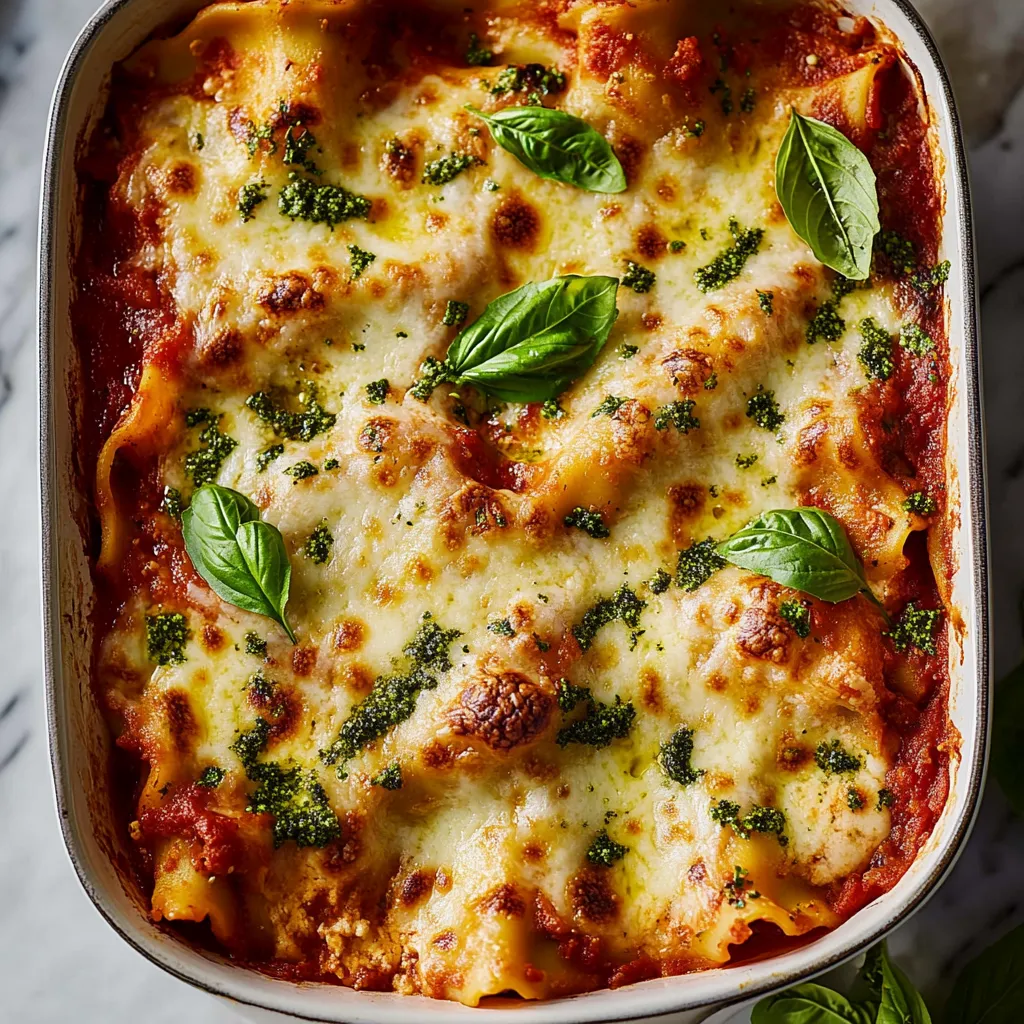 Pin it
Pin it
Ruffly pasta sheets tucked between oven-roasted veggies, fluffy ricotta, and hearty tomato sauce make this veggie lasagna truly special. Every mouthful combines sweet caramelized vegetables, stretchy cheese, and soft noodles that turn this familiar comfort dish into something extraordinary.
This dish started in my university years cooking for buddies, getting better with each new try. These days it's what I always make for get-togethers, and it wins over both veggie fans and meat eaters every time.
Key Components
- Regular lasagna noodles: Don't go for no-boil options as they won't give you the right bite
- Garden vegetables: Pick firm zucchini and mushrooms that'll stand up to roasting
- Full-fat ricotta: Whole milk versions give you the smoothest, richest results
- Leafy spinach: Brings vibrant color and goodness between each layer
- Tasty marinara: Whether you make it or buy it, your sauce really counts
Cooking Method
- 1. Get Those Veggies Right
- Start by roasting bell peppers, zucchini, onions, and mushrooms until they're golden brown. This key step packs in flavor and stops your lasagna from getting soggy.
- 2. Fix Up The Cheese Mix
- Mix your ricotta with fresh lemon zest and garlic for bright flavors that work well with the roasted veggies. Stir it all together so the flavors spread evenly.
- 3. Handle The Pasta
- Cook your noodles just until they have a slight bite, as they'll keep cooking in the oven. Toss them with a bit of olive oil so they won't stick together.
- 4. Layer Everything Carefully
- Begin with sauce at the bottom, then build up with noodles, ricotta, veggies, spinach, and more sauce. Do this a few times and finish with cheese on top.
- 5. Bake It Just Right
- Start covered if needed, then uncover to get that golden cheese top. Let it sit before cutting so your slices stay neat.
 Pin it
Pin it
I started making lasagna during college dinner hangouts. Now years later, I've nailed the technique of building up tasty layers to create something that always brings folks together around the dinner table.
Smart Do-Ahead Options
Put everything together up to a day before and keep in the fridge. Take it out 30 minutes before cooking. Add another 10-15 minutes to your baking time if it's cold from the fridge.
Freezing Know-How
You can freeze your assembled but uncooked lasagna for up to three months. Thaw it in your fridge overnight before baking. Keep it covered with foil for the first half of cooking time.
What To Serve With It
Round out your meal with a crisp garden salad with tangy dressing, warm buttery garlic bread, or some oven-roasted broccoli or string beans.
Ways To Switch It Up
Change things based on what's in season: try yellow squash and eggplant in summer, butternut squash and kale in autumn, or go for roasted root veggies during winter months.
What started as a basic veggie main course has turned into the recipe everyone asks me for. Mixing roasted vegetables, three kinds of cheese, and well-cooked pasta creates something that feels homey yet fancy. Whether you're cooking for vegetarians or just want a filling meatless dinner, this lasagna shows how vegetables can steal the show at any meal.
 Pin it
Pin it
Frequently Asked Questions
- → Can I prep this early?
- Sure! Put it together a day in advance and keep it chilled. Add 10-15 minutes to bake if it's cold.
- → How should I heat leftover slices?
- Cover them with foil and pop them in a 350°F oven until warmed, about 20-25 minutes.
- → What's the best way to freeze it?
- Freeze before it's cooked. Let it thaw in the fridge overnight, then bake with an extra 15-20 minutes added.
- → Why roast the veggies first?
- Roasting makes the flavors pop and reduces moisture so the dish doesn’t end up soggy.
- → Can I swap out the veggies?
- Sure thing! You could roast carrots, eggplant, or butternut squash instead. Just make sure they’re soft.
